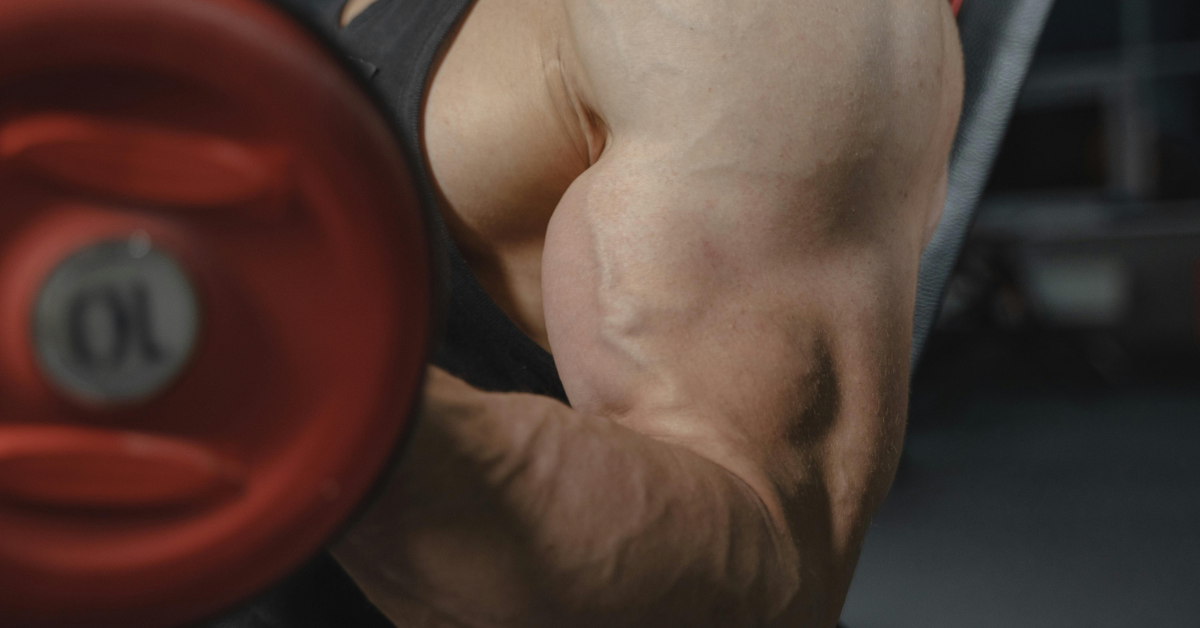The Best Biceps Exercises According To Science

The science has spoken, and bicep workouts now have official rankings. Natural bodybuilding pro Jeff Nippard released a comprehensive tier list video evaluating 20 bicep exercises based on muscle-building research, creating what might be the most academic approach to rating curl variations ever attempted.
The Expert Behind the Bicep Exercise Rankings
Nippard brings legitimate credentials to the bicep exercise debate. The Canadian holds a Bachelor of Science degree in biochemistry, earned the title of Mr. Junior Canada in natural bodybuilding (2012), and held a Canadian bench press record in 2014. His YouTube channel reaches nearly 7 million subscribers who tune in for evidence-based fitness content.
The biochemistry graduate approaches fitness with scientific rigor, having guest lectured at universities and coached professional natural bodybuilders and powerlifters. His academic background provides the foundation for analyzing complex research and translating it into practical training advice.
The Bicep Workout Tier System Breakdown
Nippard’s ranking system spans six tiers, from S-tier (his favorites) down to F-tier (generally not recommended). The evaluation criteria focus on muscle-building potential, emphasizing high tension in stretched positions, comfortable execution without elbow pain, smooth resistance profiles, and simple progression methods.
S-Tier Champions: The dumbbell preacher curl claimed the top spot for providing high tension in a stretched position while preventing cheating. The face-away Bayesian cable curl earned S-tier status for maximizing biceps stretch while maintaining even tension throughout the range of motion. Machine preacher curls also made the elite tier.
Notable Rankings: Traditional barbell curls landed in B-tier despite their popularity, with Nippard noting wrist strain issues and suboptimal tension curves. The controversial waiter curl received the dreaded F-tier rating, criticized for cranking wrists, awkward plate handling, and limited overload potential.
Best Biceps Exercises Tier List
S-Tier (My Favorites – Do Them If You Can)
Dumbbell Preacher Curl – Provides high tension in stretched position while preventing cheating
Face Away Bayesian Cable Curl – Maximum biceps stretch with even tension throughout range of motion
Machine Preacher Curl – Locked-in positioning with excellent stretch emphasis
Preacher Hammer Curl – Improved resistance profile for brachialis development
A-Tier (Strongly Recommend)
EZ Bar Curl – Reduced wrist strain compared to barbell with good overload potential
Standing Dumbbell Curl – Convenient exercise that works each side individually
Incline Curl – Solid lengthened biased movement, fast setup
Lying Dumbbell Curl – Extreme stretch version with tension in stretched position
Standard Cable Curl – Even tension throughout range of motion
Cheat Curl – Proper execution allows heavier loads with controlled negatives
Strict Curl – All tension directed into biceps with wall bracing
Hammer Curl – Number one movement for biceps peak development
Inverse Zottman Curl – Combines hammer curl positive with supinated negative
Modified 21s – Reordered sequence: shortened, full ROM, then lengthened partials
B-Tier (Still Do These in Certain Contexts)
Barbell Curl – Accessible despite suboptimal tension curve and wrist strain
Flat Bench Curl – Highest tension in most stretched position but limited progression
Chin-Ups – Good for biceps growth but back muscles often limiting factor
Low B-Tier: Traditional 21s – Fun challenge but suboptimal order sequence
C-Tier (Better Options Available for Most People)
Scott Curl – Removes tension in stretched position, worse than 45° preacher curl
Drag Curl – Limited muscle length change throughout range of motion
Spider Curl – Biceps in shortened position with no high degree of stretch
F-Tier (Generally Not Recommended)
Waiter Curl – Cranks wrists, awkward plate handling, limited overload potential


Science-Based Training Philosophy
The tier list reflects current hypertrophy research emphasizing lengthened partial repetitions and tension in stretched positions. Recent studies comparing incline curls to preacher curls showed preacher curls caused significantly more distal biceps growth, supporting Nippard’s preference for exercises that provide high tension in stretched positions.
Nippard’s methodology incorporates biomechanics research and EMG studies, though he acknowledges these provide indirect evidence rather than definitive proof. The rankings represent educated interpretations of available science combined with practical training experience.


Biceps Anatomy and Exercise Selection
The video addresses both heads of the biceps brachii – the short head on the inside of the arm and the long head contributing to biceps peak. Nippard also emphasizes the brachialis muscle, which sits underneath the biceps and can push the biceps up more when developed, potentially enhancing peak appearance.
For biceps peak development, Nippard identifies hammer curls as his number one movement, particularly when performed on a preacher bench. The neutral grip shifts tension toward the brachialis while still working the biceps, potentially improving the visual appearance of biceps peak.


Training Applications
The tier list provides practical guidance for bicep workouts and biceps exercises selection. Nippard recommends including both S-tier movements in training routines, with the face-away Bayesian cable curl as his top choice and the preacher curl as a close second.
The rankings suggest prioritizing exercises that provide tension in lengthened positions over those with zero tension at full stretch. This approach aligns with emerging research on lengthened partials and stretch-mediated hypertrophy.
While acknowledging limitations in current research, Nippard provides transparent rationale for rankings based on biomechanics, tension curves, and practical considerations. The approach reflects scientific thinking applied to exercise selection for optimal biceps exercises and best bicep exercises identification.
The comprehensive evaluation covers traditional movements like barbell curls alongside specialized variations like drag curls and spider curls, providing guidance for both best biceps exercises selection and identifying less effective options for biceps workouts programming.






